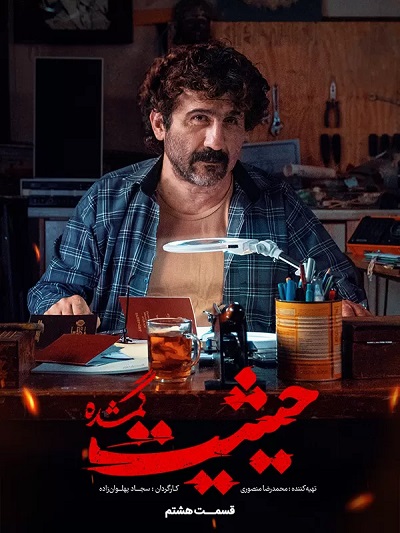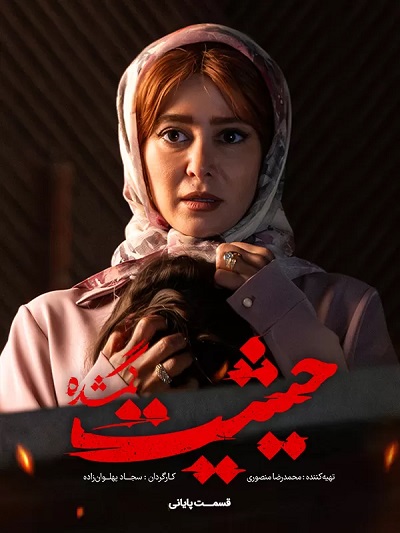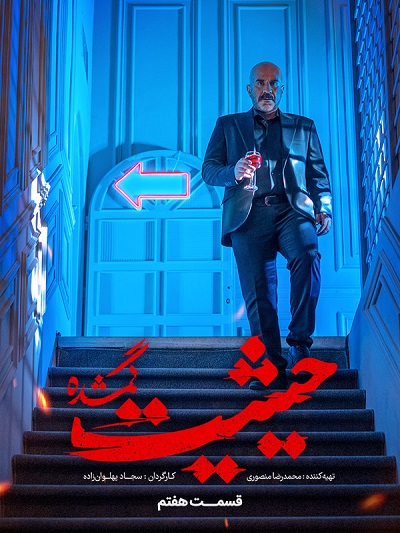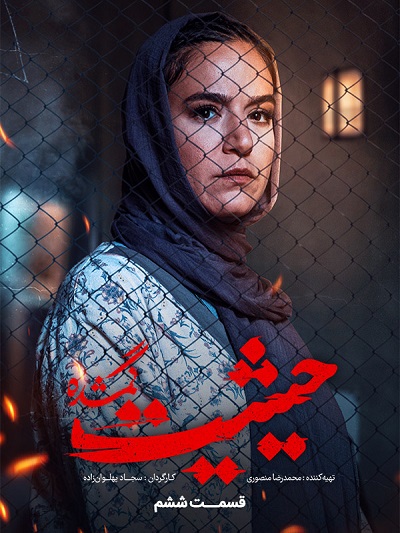Heysiate Gomshode 08

Using a variety of dramatic elements, including outstanding acting and experienced direction, portrays how dignity can be considered as an important and powerful value in a society full of contradictions and problems. Combining drama and society, the series gives the audience an opportunity to participate in examining and reflecting on deep and valuable human issues.
Director
Sajjad Pahlavanzadeh
Cast
Amir Norouzi
Bahareh Afshari
Behzad Khalaj
Elnaz Habibi
Elnaz Malek
Mehdi Hoseininia
Nader Fallah
Setareh Pesyani
Danlod Va Pakhshe Online
In the early 1970s, a New Iranian Cinema emerged (cinema motefävet). However, following the Revolution in 1979, a few filmmakers and actors went into exile as Khomeini altered the focus in features. Between 1979 and 1985, about 100 features were released. While Khomeini’s censorship remained, the small number of features produced focused on sexual display and European influence. In 1982, the annual Fajr Film Festival financed films. The Farabi Cinema Foundation then stepped in to try and reassemble the disorganized cinema. The following year, the government began to provide financial aid. This change in regime encouraged a whole new generation of filmmakers, which included female directors as well. With this, the focus shifted to children overcoming obstacles: true stories, lyrical, mystical drama, real-life problems, documentary footage, etc. Post-revolutionary Iranian cinema has been celebrated in many international forums and festivals for its distinct style, themes, authors, idea of nationhood, and cultural references. Starting With Viva… by Khosrow Sinai and followed by many excellent Iranian directors who emerged in the last few decades, such as Abbas Kiarostami and Jafar Panahi. Kiarostami, who some critics regard as one of the few great directors in the history of cinema, planted Iran firmly on the map of world cinema when he won the Palme d’Or at the Cannes Film Festival for Taste of Cherry in 1997. The continuous presence of Iranian films in prestigious international festivals such as the Cannes Film Festival, the Venice Film Festival, and the Berlin Film Festival attracted world attention to Iranian masterpieces .[permanent dead link]. In 2006, six Iranian films, of six different styles, represented Iranian cinema at the Berlin Film Festival. Critics considered this a remarkable event in the history of Iranian cinema. An important step was taken in 1998 when the Iranian government began to fund ethnic cinema. Since then Iranian Kurdistan has seen the rise of numerous filmmakers. In particular, the film industry got momentum in Iranian Kurdistan and the region has seen the emergence of filmmakers such as Bahman Ghobadi, actually the entire Ghobadi family, Ali-Reza Rezai, Khosret Ressoul and many other younger filmmakers. There is also movie-documentary production, often critical of the society in the name of the Islamic revolution ideal, like the films directed by Mohammedreza Eslamloo. By the year 2001 the number of features produced in Iran rose to 87 (from 28, which is the number of films that were produced in 1980, after the fall of the Shah). The most popular genres were melodramas and historical pageants which seldom went to festivals. In 1997, the newly elected president, Mohammed Khatemi, would eventually come to play a role in helping filmmakers achieve a certain degree of artistic freedom





